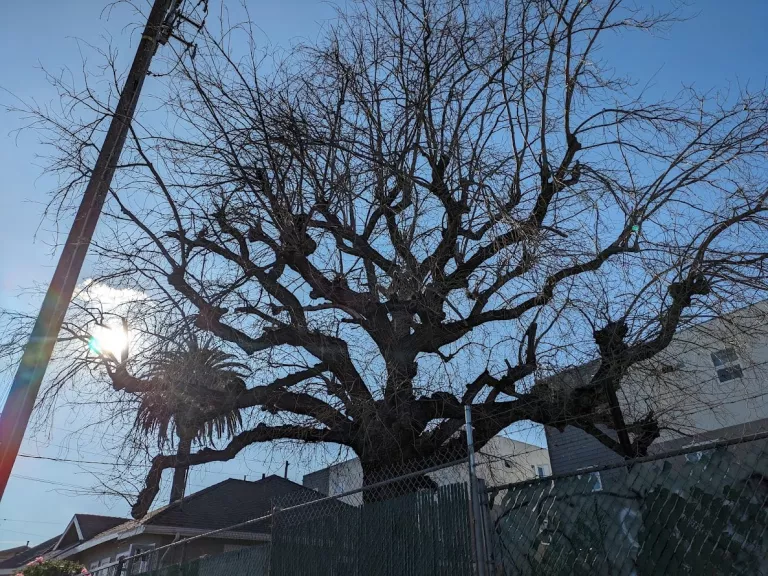
By Ann Zumwinkle
On a nondescript block in Los Angeles' Koreatown stands a tree with an extraordinary legacy. This tree, known as the Cornelius Johnson Oak, is a living monument to one of the most significant events in sports history—the 1936 Berlin Olympics. The tree was planted by Cornelius Johnson, an African American athlete who won a gold medal in high jump against the backdrop of the politically charged atmosphere of those 1936 Games.
The 1936 Olympics were hosted by Nazi Germany. Under the shadow of Adolf Hitler's oppressive regime and racist ideologies, Johnson, along with Jesse Owens and 17 other competing African American athletes, defied these prejudices, showcasing remarkable talent and sportsmanship.
As part of their award, all 1936 gold-medal winners received oak saplings, 130 symbolic gifts intended to be planted back in their home countries.
The United States won 24 gold medals that year (Jesse Owens received four), with eight presented to athletes from the Los Angeles area. However, only six of the original 130 Olympic Oaks planted across the United States are determined to still be standing. The Los Angeles area contains two: one on the USC campus, the other, the Cornelius Johnson Oak, on the corner of 12th Street and Hobart Boulevard in Koreatown, in the side-yard of the Johnson family home, which was built by Cornelius’ father in 1903.
While at Los Angeles High School, Johnson competed in sprints and high jump; he still holds the school’s high-jump record, which he set in 1932. At the Los Angeles City Olympics, 18-year-old Johnson placed fourth in the high jump. At the 1936 Summer Olympics in Berlin, Johnson won the gold in the high jump, setting an Olympic record. Yet he and Jesse Owens were both snubbed by Adolf Hitler, who refused to shake hands with all non-German winners. Johnson died from pneumonia at the young age of 32.
The Cornelius Johnson Oak is part of a larger legacy shared by other Olympic Oaks around the world. Many of these trees were planted in public parks, on university campuses, and on athletic fields, each carrying its own unique story of the athlete it represents. A few of these trees have thrived, becoming local landmarks, while others have faced challenges due to urban development and environmental changes. Efforts have been made to preserve these oaks, recognizing their historical and cultural significance. Worldwide, just a few dozen have survived.
There are very obvious signs of the Cornelius Johnson Oak's poor condition - the tree remains brown with peeled bark, even though a conservation project has been launched. In 2023, both the oak and the Cornelius Johnson family home on Hobart Street were finally designated LA Historic-Cultural Monument #1283, a promise to try to preserve the tree not only as a living monument to Johnson's legacy but also as an educational and historical resource chronicling excellence and justice for future generations.
Resources:
Historic Resource designation and location
New York Times article by Tim Arango, May 28 2022 In Los Angeles, a Tree With Stories to Tell (Subscription may be needed.)
Esotouric Blog article by Kim Cooper, March 15, 2022 Save Cornelius Johnson’s Olympic Oak
Video from CBS Mornings: Los Angeles oak tree carries legacy of forgotten 1936 Olympic athlete
____________
Ann Zumwinkle has enjoyed volunteering with the Angeles Chapter for the past 25 years